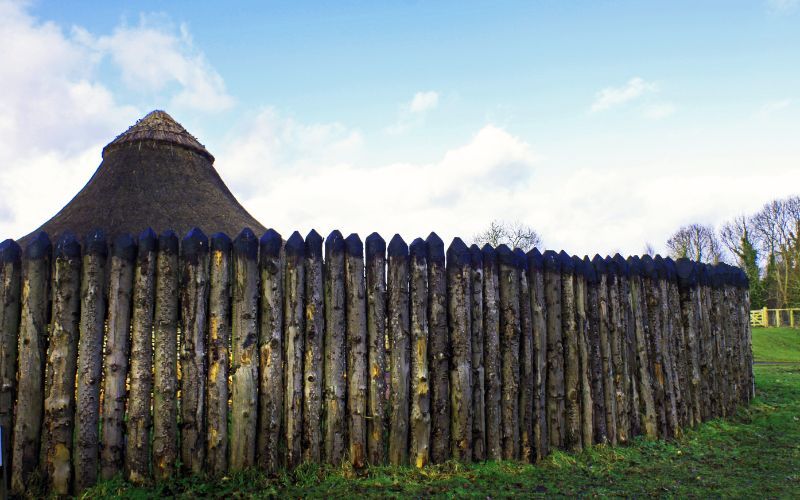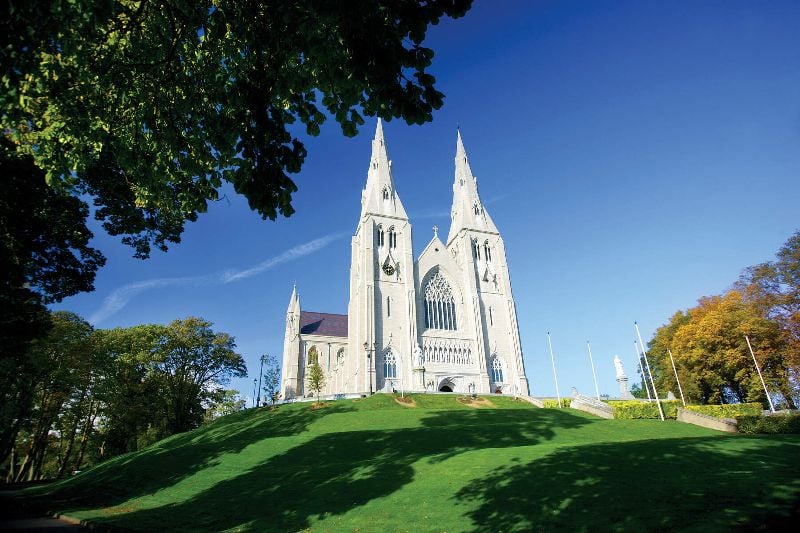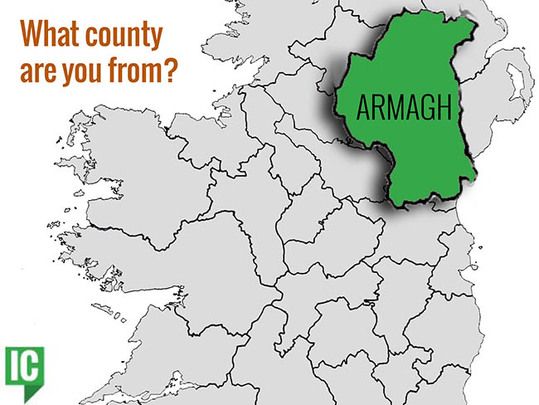Home to the seat of St. Patrick and nicknamed Bandit Country during the Troubles, here's all you need to know about County Armagh, one of the six counties of Northern Ireland.
Irish Name: Ard Mhacha, “Macha’s height”
Nickname: The Orchard County
Population: 174,500
Area: 512 square miles
Province: Ulster
County Town: Armagh
GAA Colors: Orange and white
Common Surnames: Murphy, Hughes, Wilson, Campbell, O'Hare, Smith, McCann, Donnelly, Watson, and Quinn
Famous People with Armagh roots: Singer Tommy Makem, William McCrum (inventor of the penalty kick in soccer), Arthur Hunter Palmer (Premier of Queensland), Field Marshal John Dill, Frank Aiken, Andrew Trew Wood, John Stephenson (built the world's first streetcar), poet Paul Muldoon, the former first minister of Northern Ireland Ian Paisley.

Markethill, Co Armagh. (Getty Images)
A brief history of Co Armagh
Bordered by Lough Neagh and counties Down, Louth, Monaghan, and Tyrone, County Armagh is located within the province of Ulster and is a part of Northern Ireland.
Until the fourth century, Armagh was home to the Ulidians and ruled by the Red Branch, whose seat of power was Navan Fort, near what is today the city of Armagh. Navan Fort was then called Emain Macha, after the goddess Macha, associated with war, horses, and sovereignty. Later in the fourth century, the region was invaded by the Clan Colla, who ruled until the 12th century, when the land was divided into a number of baronies.
In the pages of Irish history, Armagh is especially notable for being the seat of St. Patrick, who built Armagh into Ireland’s ecclesiastical capital and established his principal church there. St. Patrick’s Church of Ireland Cathedral, as it is now called, was first founded in the year 445, and has been destroyed and rebuilt 17 times since then. It is also believed to be the burial place of Brian Boru.
A border county, Armagh has a large Catholic population. During the Troubles, it received the nickname Bandit Country.

Navan Fort, Co Armagh. (Getty Images)
Key attractions in Co Armagh
Navan Fort is a tree ring fort that was home to the ancient rulers of Ulster.
Slieve Gullion is an extinct volcano with a crater lake. A climb to the top, which is the highest point in the county, will provide views of nine counties.
The city of Armagh is home to a number of religious and educational landmarks and institutions, including St. Patrick’s Church of Ireland Cathedral, first built in 445, St. Patrick’s Roman Catholic Cathedral, built in 1838, the Armagh Observatory, opened in 1790 and now home to the more modern Armagh Planetarium, and the Armagh Public Library, one of the oldest in Northern Ireland, which boasts a fine collection of 17th and 18th-century texts, including Jonathan Swift’s own first-edition copy of his famous “Gulliver’s Travels.”

St Patricks Cathedral, Co Armagh (Ireland's Content Pool)
* Originally published in 2016, updated in May 2024.




Comments